Cervids are a large family that includes many different species. There are currently more than 50 known species of Cervids. These deer species are distributed all over the world, from forests near the Arctic Circle to savannahs. Their living environments and habits also vary from region to region. However, due to habitat destruction and illegal hunting by humans, many wild deer species are in To the point of being endangered, some have even become extinct. So which type of wild deer is the rarest? What are the endangered deer species? The editor below will take stock of the 10 rarest species of deer in the world, including Eld's deer, Chilean elk, dolphin deer, Vietnamese giant muntjac, Northern Pudu deer, etc. Let's learn about them together.
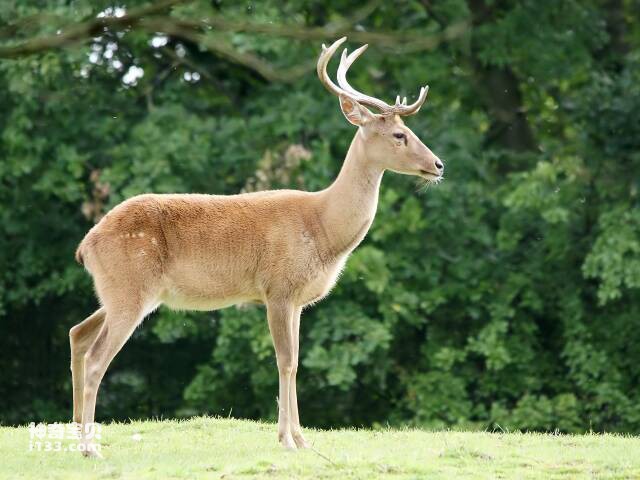
1. Eld’s Deer
Eld's deer is a mammal that lives in Asia and looks similar to sika deer. They are small in size, usually about 1.2 meters in length, about 60 centimeters in height at the shoulder, and weigh between 20 and 30 kilograms. Eld's deer coat color is reddish brown, with white spots in summer but not in winter. Their antlers are forked, and the male deer's antlers are more spectacular than the female deer's, and can grow to about 70 centimeters. Eld's deer mainly inhabits forests, mountains and grasslands, and likes to live near streams or lakes. They are herbivores and feed on grass, leaves, buds, fruits and nuts. Eld's deer is a nocturnal animal, usually hiding in trees or grass during the day and coming out to feed at night. Due to factors such as human development activities and deforestation, the number of Eld's deer has gradually decreased, and it is currently listed as a national first-level protected animal.
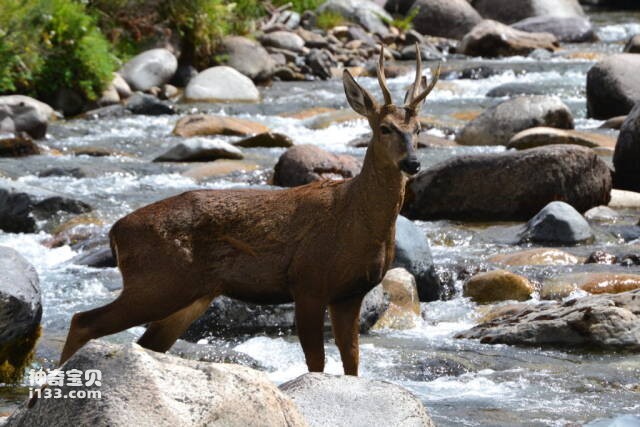
2. Chilean horse moose
The Chilean red elk, also known as the South American red deer or the Andean red deer, is a mammal that lives in South America. They belong to the order Artiodactyla and the family Red Deer, and are the only species of deer found in South America. The Chilean horse moose is smaller, with a body length of about 1-1.5 meters, a shoulder height of about 75 centimeters, and a weight between 40-80 kilograms. Their bodies are grey-brown with black stripes on their backs and heads. These stripes help them blend into the environment in grasslands and mountains and avoid detection by natural enemies.
Chilean elk are mainly distributed in the Andes Mountains of South America, including Chile, Argentina, Peru, Bolivia and other countries. They are herbivores that feed on herbaceous plants and are often found in open grasslands, hillsides and alpine areas. Due to habitat destruction, hunting and illegal trade, the number of Chilean elk has been greatly reduced and it is listed as an endangered species. Many conservation agencies are taking measures to protect this species, including banning hunting and illegal trade, establishing wildlife reserves, etc.
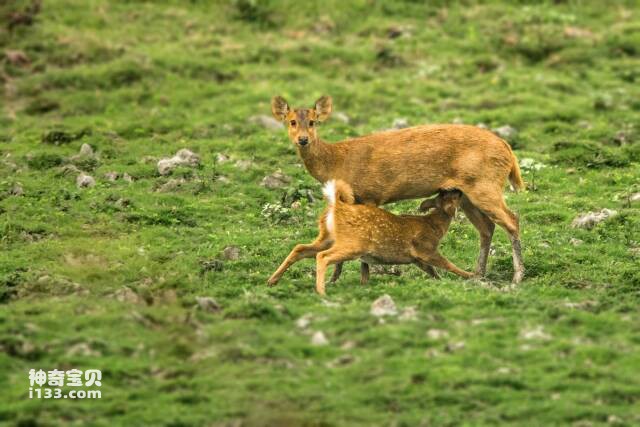
3. Dolphin Deer
The hog deer, also known as the Indian hog deer, is a small deer-like animal found in South and Southeast Asia. They are usually 1.2-1.5 meters long, 60-70 centimeters tall at the shoulder, and weigh about 50-80 kilograms. This deer species mainly inhabits open environments such as grasslands, shrublands and forest edges. They feed on a variety of plants, fruits and twigs, and sometimes crops. The Indian Hog Deer is a nocturnal animal and often rests in trees or grass during the day. The fur color of Indian Hog Deer is mostly orange-brown, with white belly and lower jaw. Males usually have short, curved horns, but only a few females develop horns. These deer are also hunted and traded, so their numbers are gradually decreasing.
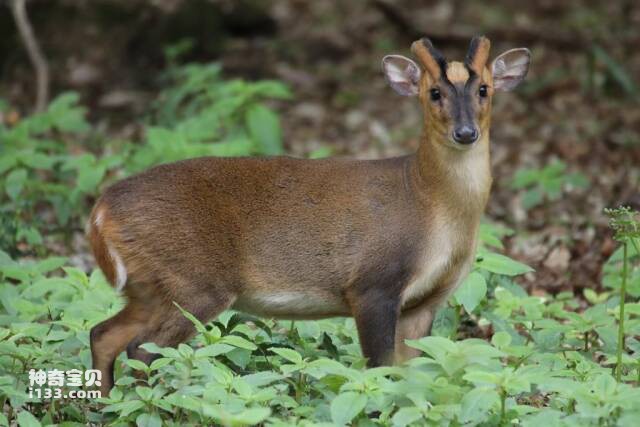
4. Vietnamese giant muntjac
The Vietnamese giant muntjak, also known as the Vietnamese horse musk deer, is a small deer species found in the alpine forests of northern Vietnam. They are a relatively recently discovered species, only discovered in 1994 by a French hunter. The Vietnamese horse musk deer has a short body, only the size of an adult rabbit. They usually have a body length of 50-70 cm, a shoulder height of about 40 cm, and a weight of only 10-15 kg. They have light brown hair, their belly is lighter than their back, and their eyes are larger with black and white eye circles. Males are slightly larger than females and have two canines. Vietnamese horse musk deer are mainly active at dawn and dusk, feeding on herbs, leaves and fruits. They are very agile and are good at escaping predators by jumping and crawling. Although their exact numbers are not yet known, they face threats such as habitat destruction and illegal hunting, and are listed as endangered.
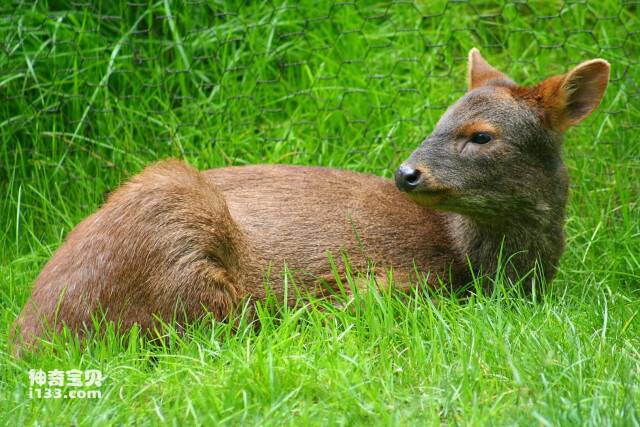
5. North Pudu Deer
The northern Pudu deer, also known as the Andean Pudu deer, is a small deer species found in the Andes Mountains of South America. They are one of the smallest and rarest deer in the world. The Andean Pudu deer is very small, with a shoulder height of only about 30-40 centimeters and a weight of less than 10 kilograms. They have brown or reddish-brown hair with white spots and stripes. Both males and females have canine teeth, but the canine teeth are smaller than those of other deer. Andean Pudu deer are primarily nocturnal and feed on herbs and leaves. They are good at hiding in bushes and grass, and can also escape predators by jumping and running. Although the species' numbers are currently unknown, they face threats such as habitat destruction and illegal hunting, and are listed as endangered.
It should be noted that in Spanish, the name of this deer "Pudu mephistophiles" comes from the demonic character Mephistopheles in the work "Faust" by the German writer Johann Wolfgang von Goethe. Because the name can cause controversy and misunderstanding, other names are used in some English literature, such as Andean Pudú, etc.
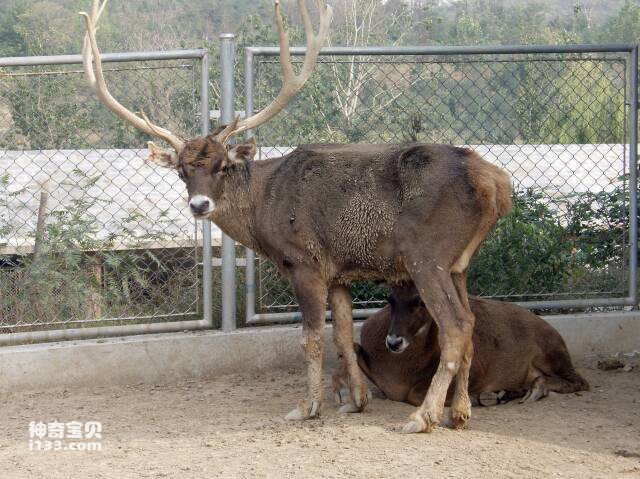
6. White-lipped deer
White-lipped deer (English name: White-lipped Deer) is a deer species living in Asia. They are distributed in southwest China, the Indian subcontinent, and Southeast Asia. White-lipped deer are relatively small, with a shoulder height of about 80-100 centimeters and a weight of about 30-50 kilograms. Its most distinctive feature is its white lips, hence its name. The coat color is usually dark brown, sometimes with gray or black spots. The white-lipped deer is a plant-eating herbivore, mainly eating grass, leaves, buds and fruits. They are usually active at dusk or at night and rest in dense bushes during the day. The white-lipped deer is a rare protected animal that is currently facing the threat of deteriorating living environment and is listed as a Class I protected animal in CITES Appendix I.
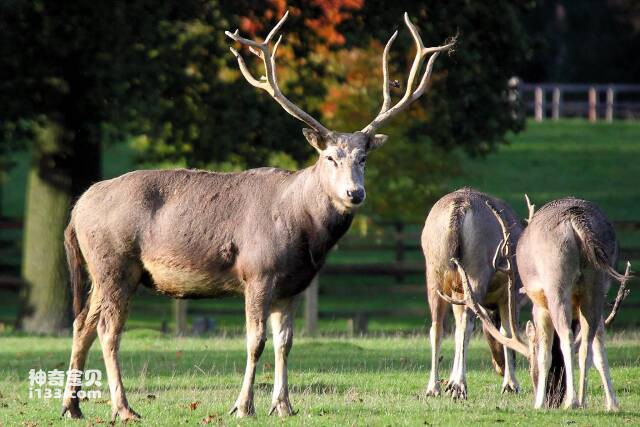
7. Elk
Elk, also known as Sixiang or Chinese sambar, is a rare deer species and one of the unique mammals in China. They are native to Northeast China and the North China Plain, but due to historical over-hunting and habitat loss, there are currently only wild populations in a few areas. Elk are larger in size, with a shoulder height of about 1.4 meters. Males are more spectacular than females. Their horn-like bones are flat and spread out to both sides, resembling a large lotus leaf, and have high decorative and ornamental value. The elk's fur is brownish-red, with white belly and lips.
Elk are herbivorous animals that feed on plants, mainly eating grass, leaves, buds and bark. They are usually active at dusk or at night and rest in bushes and grass during the day. Due to the continuous destruction and impact of humans, the number of elk has declined sharply, and it is listed as a critically endangered species on the IUCN Red List of Threatened Species. At present, the Chinese government has adopted a series of protection measures, including establishing nature reserves, conducting monitoring and scientific research, and carrying out education and publicity, in order to protect this precious species.
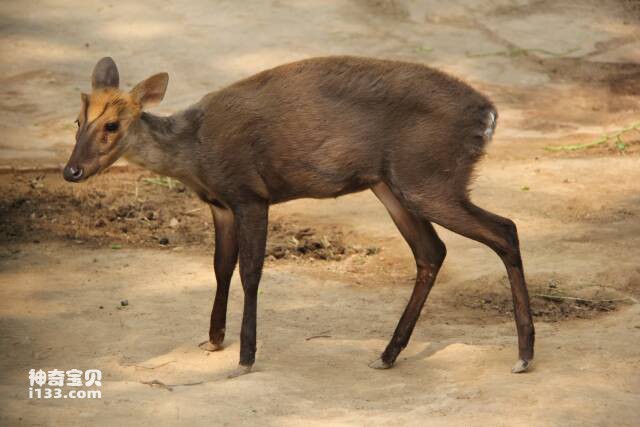
8. Black muntjac
Black muntjac, also known as Asian black deer, is a small ungulate unique to China and belongs to the deer family. Its body length is about 1.0-1.3 meters, its shoulder height is about 50-60 cm, and its weight is about 10-20 kg. The black muntjac is very different from other roe deer in appearance. Its body is dark brown or black, its limbs and neck are white, and it is both male and female. Black muntjacs are mainly distributed in the mountainous areas of Yunnan, Guizhou, Guangxi and other places in southern China, as well as in neighboring countries such as Vietnam and Laos. They live in forests at an altitude of 1,500-3,800 meters. They like to forage in the woods and feed on herbs, tree buds and bark. Due to its gradual decline in numbers, it is listed as a national second-level protected animal in China.
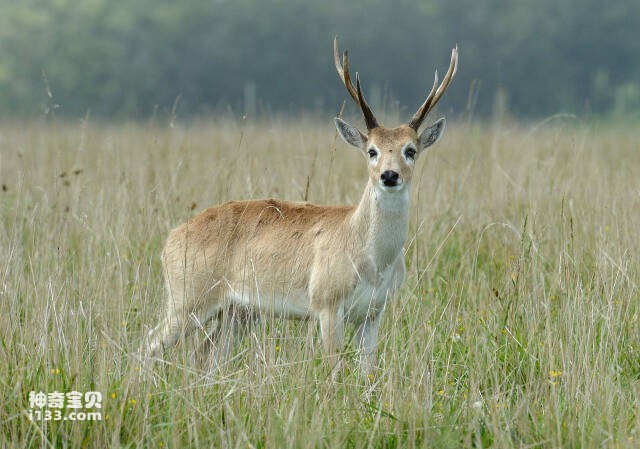
9. Grassland Deer
The savannah deer, also known as the Paraguayan savanna deer or the South American duiker, is a small ungulate animal belonging to the family Cervidae. Its body length is about 1.0-1.3 meters, its shoulder height is about 70-80 cm, and its weight is about 18-25 kg. The species' coat color is primarily brown, with white patches on the throat and lower jaw. Paraguayan grassland deer is mainly distributed in the grassland areas of Brazil, Argentina, Uruguay, Bolivia and Paraguay in South America. They live in wide open areas and thickets, feeding on herbaceous plants and low shrubs. Paraguay grassland deer are docile and usually travel in groups, but they can also travel alone.
Due to factors such as overhunting, habitat destruction, and illegal trade, the number of Paraguayan grassland deer has gradually declined and is listed as a near-threatened species. Governments of various countries have taken a number of conservation measures to protect this species, including establishing nature reserves, banning illegal hunting and strengthening management.
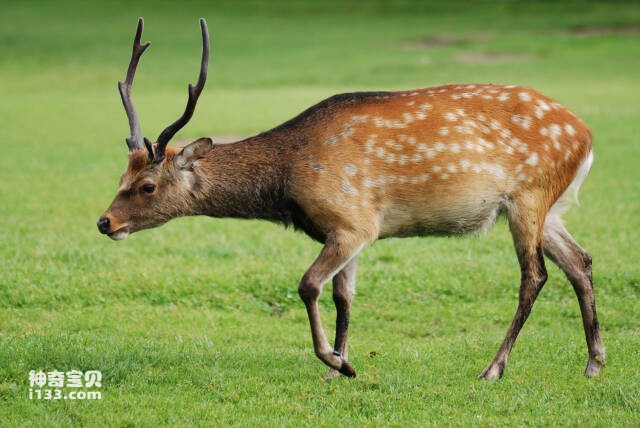
10. Sika deer
The sika deer is a medium-sized ungulate that belongs to the family Cervidae. Its body length is about 1.0-1.7 meters, shoulder height is about 70-110 cm, and its weight is about 30-150 kg. The coat color of this species is mainly brown, and in summerThere will be obvious white spots and black spots in winter, and they will all turn into dark brown in winter. Sika deer are native to Japan, but have been introduced throughout the world as ornamental animals and hunting subjects. They live in mountainous and forest areas and feed on herbs, bark, twigs, etc. Sika deer usually travel in groups, but they also travel alone.
Due to factors such as over-hunting, habitat destruction, and illegal trade, the number of sika deer in their native areas has gradually decreased and is listed as an endangered species. However, in other parts of the world, sika deer populations remain relatively stable. Therefore, in many countries and regions, people have taken a number of conservation measures to protect this species, including establishing nature reserves, banning illegal hunting, and strengthening management.
The editor mainly takes stock of all existing deer species in the world, based on the endangered level of their wild populations, and combines it with relevant Internet lists to make a comprehensive summary. It is for entertainment reference only. (Solemn statement: Hunting, killing, eating, and trading wild animals and their products are all illegal and criminal acts! Wild animals belong to nature. For the sake of the ecological environment and your health, please refuse to buy, raise, or eat wild animals!)
animal tags:
We created this article in conjunction with AI technology, then made sure it was fact-checked and edited by a Animals Top editor.